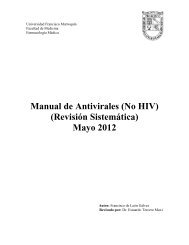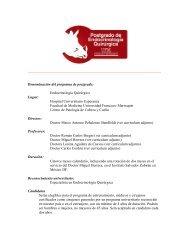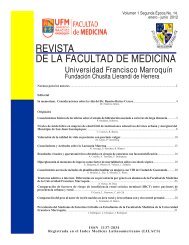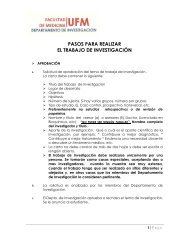Teaching That Sticks (pdf)
Teaching That Sticks (pdf)
Teaching That Sticks (pdf)
- No tags were found...
Create successful ePaper yourself
Turn your PDF publications into a flip-book with our unique Google optimized e-Paper software.
of the confusion. Now, I don’t care about dust, and the makeup<br />
of the rings of Saturn is entirely irrelevant to my life. But<br />
that writer had me turning pages like a speed-reader.”<br />
Piquing curiosity is the holy grail of teaching. Cialdini<br />
said, “You’ve heard of the famous Ah ha! experience, right?<br />
Well, the Ah ha! experience is much more satisfying when<br />
it’s preceded by the Huh? experience.”<br />
So how do you create the “Huh?” experience with your<br />
students? George Loewenstein, a behavioral economist,<br />
says that curiosity arises when we feel a gap in our knowledge.<br />
Loewenstein argues that gaps cause pain. When we<br />
want to know something but don’t, it’s like having an itch<br />
we need to scratch. To take away the pain, we need to fill<br />
the knowledge gap. We sit patiently through bad movies,<br />
even though they may be painful to watch, because it’s too<br />
painful not to know how they end.<br />
Movies cause us to ask, What will happen? Mystery novels<br />
cause us to ask, Who did it? Sports contests cause us to<br />
ask, Who will win? Crossword puzzles cause us to ask, What<br />
is a 6-letter word for psychiatrist? Pokemon cards cause kids<br />
to wonder, Which characters am I missing?<br />
One important implication of the “gap theory” is that<br />
we need to open gaps before we close them. Our tendency is<br />
to tell students the facts. First, though, they must realize<br />
they need them.<br />
The trick for convincing students they need our<br />
message, according to Loewenstein, is to first highlight<br />
some specific knowledge they are missing. You can pose a<br />
question or puzzle that confronts them with a gap in their<br />
knowledge: One recent book had a curiosity gap as its title:<br />
“Why do men have nipples?” A science teacher in Colorado<br />
asked his students: “Have you ever noticed that, in the<br />
winter, your car tires look a little flat? So where did the air<br />
go?” The book Freakonomics makes brilliant use of curiosity<br />
gaps: “Why do so many drug dealers live with their<br />
moms?” [There is a more extended discussion of curiosity<br />
gaps in Made to Stick on pages 84-90.]<br />
Another technique is to force students to make a<br />
prediction. Eric Mazur, a physics professor at Harvard,<br />
came up with a pedagogical innovation known as “concept<br />
testing.” Every so often in his classes, Mazur will pose a<br />
conceptual question and then ask students to vote publicly<br />
on the answer. The simple act of committing to an answer<br />
makes students more engaged and more curious about the<br />
outcome. This is exactly what Crowe did in asking his students,<br />
“What will my picture look like?” (He was actually<br />
creating two knowledge gaps—“what will the picture look<br />
like?” and “was I right?”)<br />
4 <strong>Teaching</strong> that <strong>Sticks</strong><br />
Unexpected ideas, by opening a knowledge gap, tease<br />
and flirt. They mark a big red X on something that needs to<br />
be discovered but don’t necessarily tell you how to get there.<br />
More on Unexpectedness from the book Made to Stick<br />
• How the producer of ABC’s Wide World of Sports<br />
figured out a way to spark the curiosity of football<br />
fans in games where their teams weren’t playing and<br />
they had nothing at stake (pages 90-93)<br />
• How Nora Ephron’s journalism teacher managed to<br />
shatter and rebuild his students’ image of journalism<br />
in a simple 30-minute exercise (pages 75-76)<br />
CONCRETE<br />
In math, students often struggle with the notion of a<br />
“function.” What exactly is a function, and what is meant by<br />
its strange “f(x)” notation, which looks like nothing else<br />
that students have seen before?<br />
It seems so abstract, so mysterious. So a math teacher<br />
at the Loudoun Academy of Science, Diana Virgo, gives<br />
students a more real-world experience with functions. She<br />
brings a bunch of chirping crickets into the classroom and<br />
poses a question: What do you think will happen to the<br />
crickets’ chirping as the temperature changes? Will it get<br />
faster or slower as the air heats up? And might the crickets’<br />
reaction be so predictable that we can actually create a<br />
function that predicts how fast they’ll chirp? Our function<br />
would be a like a little machine: You feed in a temperature<br />
(say, 85 degrees), and out pops the rate of chirping (say, 60<br />
chirps per minute).<br />
So the class runs the experiment: The crickets chirp.<br />
The students count the chirps. Virgo changes the temperature.<br />
The crickets, undoubtedly puzzled by the weather,<br />
chirp differently. The students count again. And soon the<br />
class has gathered a bunch of data that can be plugged into<br />
a software package, which generates the predictive function.<br />
It turns out that the hotter it is, the faster the crickets<br />
chirp—and it’s predictable! Suddenly, the importance<br />
of a function makes sense—it’s been grounded in reality.<br />
Students have personally experienced the entire context—where<br />
functions come from, how they’re constructed,<br />
and how they can be used. (As a side note, Virgo also warns<br />
her students that human judgment is always indispensable.<br />
For instance, if you plug into the function the temperature<br />
“1000 degrees,” it’ll predict a really really fast rate of chirping!<br />
Sadly, though, at 1000 degrees, crickets don’t chirp at<br />
all…)








